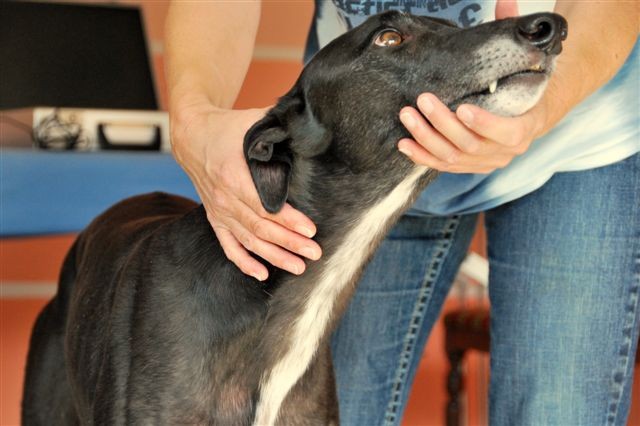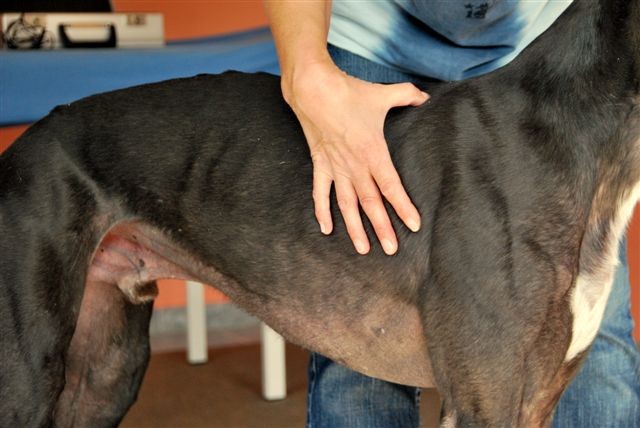Was ist die Dorn-Methode?
Es ist eine sanfte, manuelle Behandlungsmethode, mit der sich Wirbel- und Gelenkblockaden rasch und dauerhaft beheben lassen. In erster Linie lassen sich Beschwerden des Bewegungsapparates erfolgreich behandeln. Zum Beispiel Beinlängendifferenzen, Beckenschiefstände, Wirbelblockaden, subluxierte Gelenke, ISG Blockaden, Trackleg
"Sanft" bedeutet in diesem Zusammenhang, dass keine langen Hebel und keine Impulstechniken angewandt werden, wie in der klassischen Chiropraktik. Es erfolgt das Richten in der Dynamik. Durch Bewegung wird die verspannte Haltemuskulatur abgelenkt, so dass der Wirbel mit geringem Kraftaufwand wieder in die richtige Position geschoben werden kann. Die Gelenkbänder werden nicht überdehnt und es besteht keine Gefahr dass man versehentlich andere Strukturen verletzt. " Sanft " bezieht sich auch auf das Arbeiten mit den Händen. Im direkten Kontakt mit einem Menschen entspannen sich auch die meisten Patienten leichter. Leider bedeutet sanft nicht, dass die Behandlung ganz schmerzfrei abläuft. Die verspannte Muskulatur an der behandlungsbedürftigen Wirbelsäule ist eben druckschmerzhaft. Nach der Behandlung lässt der Druckschmerz allerdings sofort nach - ein Zeichen dafür, dass die Wirbelblockaden behoben sind.
Unabhängig mit welchen Beschwerden ein Patient in die Praxis kommt, ist der Behandlungsablauf stets im gleichen Schema. D.h., dass zuerst die Beinlängen verglichen werden. Dann werden Hüftgelenk, Kniegelenk und Sprunggelenk behandelt. Nach diesen Schritten sind die Beine in der Regel gleich lang. Dann wird die Lage des Beckens, sprich der Beckenknochen zueinander und zum Kreuzbein und Steißbein überprüft und gegebenfalls auch korrigiert. Nun wird die Wirbelsäule abgetastet und behandelt. Bei Lendenwirbel und Brustwirbeln orientiert man sich an den Dornfortsätzen, bei der Halswirbelsäule an den Querfortsätzen. Jeder Wirbel wird einzeln kontrolliert und wenn er blockiert ist, sofort gerichtet. Anschließend werden noch Schulter, Ellenbogen und Karpalgelenk behandelt.
The Dorn Approach The Dorn approach is a low impact technique to remedy blockings in the vertabra or joints. Done by hand it removes the problems quickly and with a lasting effect. It is mainly successful with conditions of the musculoskeletal system e.g. differences in length of legs; hip problems; irregularities of the pelvis, blocked vertabra; subluxated joints;Trackleg; blockages and twists of the illiosacral joint. 'Low impact' means in this context that neither longer lever movements nor impulse pressure is used like it is often done in classic chiropractic. It's more like adjusting the dynamic. The strained supportive muscles will be distracted by the contralateral movements that the vertebra can be put back into its correct position without much physical effort. The ligaments are not over-stretched and there isn't any danger of disrupting other structures. Low impact also means that the touch of the hands should be gentle. Many patient relax easier in direct contact with humans. Unfortunately it doesn't mean the treatment is completely painless. However after the treatment the pain from pressure ceases immediately. This is a sign that the tension is removed. The procedure is always the same independent from the conditions or pains the patient suffers from. At first the length of the legs will be compared. Then the hip, knees and hock will be treated. After these steps the length of the extremities usually is adjusted. Afterwards the pelvis i.e. the relative position of the pelvis bones to one another and to the sacral bone and the tailbone should be checked and corrected, if necessary. Then the spine should be palpated and treated. Use the spinous process to check the thoracic and lumbar vertebra and the transverse process to check the cervical spine. Check each single vertebra and treat, if necessary. At last treat shoulders, elbow and carpal joint. For two to three days after the treatment the patient should avoid heavy exercise (no running off leash). The treatment can cause sore muscles.


